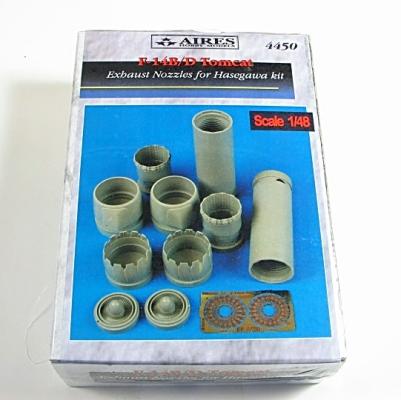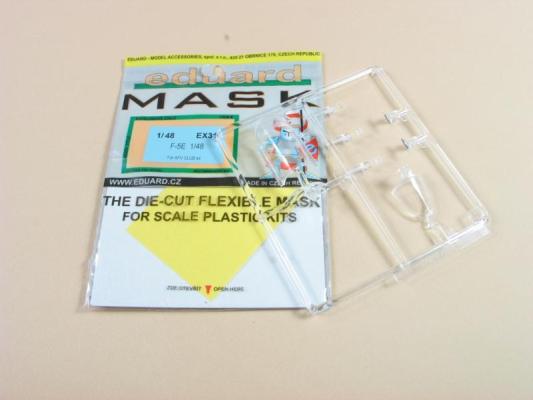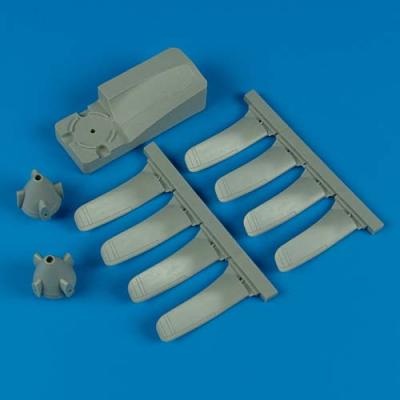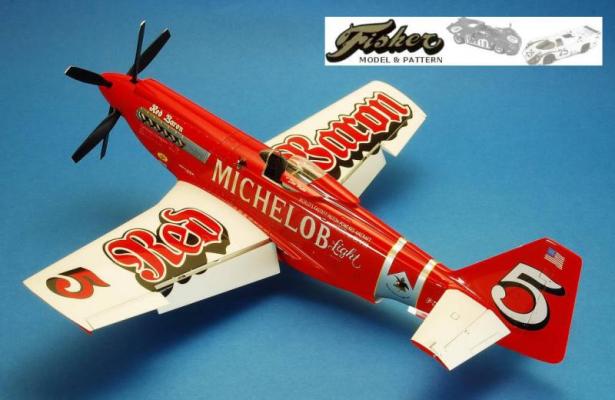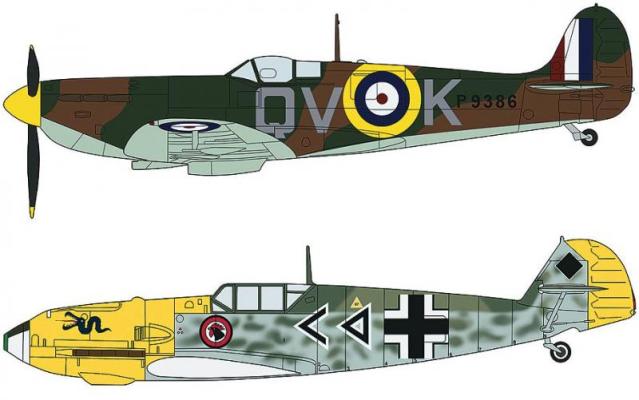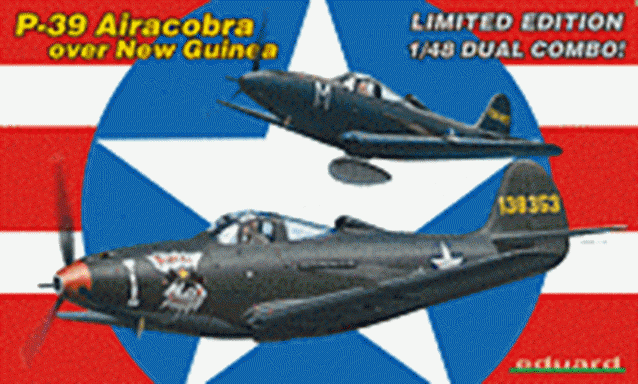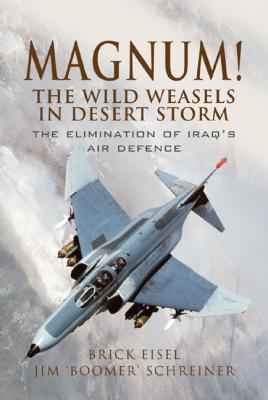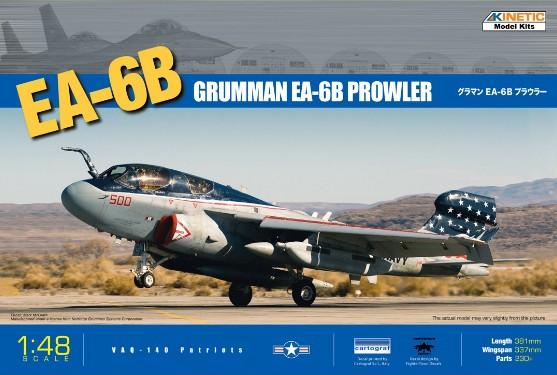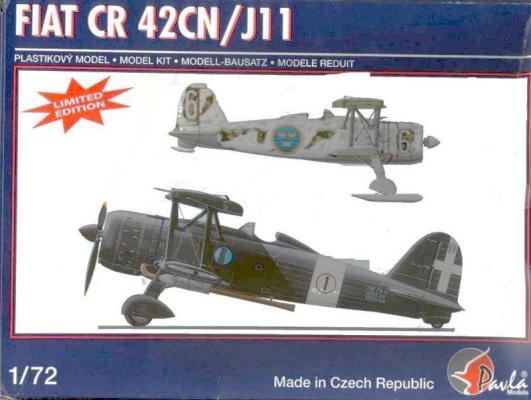When looking at our models we like to have something to look at both up front, and at the rear. Many aircraft kits are lacking in both of these areas, and Aires at least is taking care of both. This set deals with the rear area of the F-14B or D, which are both powered by the General Electric F110-GE engine. This is also the same engine found in many other aircraft, including various blocks of the F-16, F-2, and recently the F-15K. For the Tomcat, the F100 is the F100-GE-400 variant. With the introduction of this engine the F-14 experienced a substantial improvement in performance, reliability, and safety. Performance was increased enough that an F-14B or D does not need afterburner for a cat launch off a carrier.
One of the most tedious, but necessary tasks to aircraft modelers is masking canopies for painting. This is further complicated with modern aircraft, as many have an additional light yellow or gray rubber seal around the canopy glass. Trying to cut strips of tape, parafilm, or foil is tedious and time consuming to line everything up just right.
Eduard has come to the rescue for the past several years with sets of canopy masks made of Kabuki tape that is thin, flexible, and very easy to apply. Tamiya tape is the same material. Keeping up with the latest releases, Eduard put out a set for the new AFV Club 1/48 F-5E. This set would also work for the recent F-5N release as well.
Quickboost has introduced a drop in replacement set of props for the Kinetic/Italeri 1/48th scale E2C Hawkeye. The set comes with 2 sets of replacement blades, 2 complete one piece spinners and a jig to insure proper alignment of the blades. Casting is perfect with no flash, air voids and any imperfections at all.
Looking closely at the parts, one advantage to the Quickboost set is that the leading edges of the props and the ends have engraved lines where the kits are raised. Not a big issues but it is about time saving. Also, if you bought the modern version of the E2C with the 8-bladed props, you can use these to convert back. The jig is an excellent tool and insures proper alignment of the parts.
Simple install, perfect casting and great convenience are all in this set and is what Quickboost is about. My Thanks to David Lajer and Quickboost for the review sample and this is a recommended set.
At the risk of sounding like a “one string banjo”, Darn! These Fisher kits are really the car’s meow. I’ve lost track of how many of these outstanding kits from Paul I’ve had the pleasure to review, but this one is, as are all the others, an outstanding example of the pinnacle of Resin casting technology. The build is as simple as pie with the one piece wing, and a hollow-cast, nearly one piece fuselage (the belly scoop being the minor second part). With a couple of passes with the sanding sticks the fit is pure “click, click”. A minimum of glazing putty was used during the construction and finishing process.
INTRODUCTION
The Spitfire Mk. I and Messerschmitt Bf-109E-4 need no introduction to modelers of any age, so I’ll dispense with the historical background. It is only necessary to comment that these aircraft could have been adversaries, as they were both used during the Battle of Britain in 1940. I would assume that these kits were reissued for limited experience modelers, as most of us have built these kits for years.
Spitfire Mk. I
Although not as glamorous or well-known as some of its contemporaries during World War II, the Bell P-39 Airacobra was an innovative and effective weapon system -- when employed to take advantage of its strengths while minimizing vulnerability to its shortcomings. Originally commissioned in the mid-1930’s as a high-altitude interceptor, the Airacobra’s lack of a supercharger limited its effective operational altitude to 17,000 feet. By 1941, adversary aircraft – fighters and bombers – had effective operational ceilings considerably higher than the P-39. As a result, the Airacobra found it’s niche in ground strafing and close air support roles, namely in service with the Soviet Air Force, but did also see some success with U.S. and other Allied air forces in the Mediterranean and Pacific theaters of operation.
If you’re a military aviation geek like me, you can’t get enough of books like this. It chronicles the exploits of the authors as they deployed, fought, and returned home from Desert Shield / Desert Storm.
- Chapter 1 covers the history of the Wild Weasel program, including the origin of the now infamous “YGBSM” unofficial motto. They also get into the specific threats faced and the basics of how they can bring down enemy aircraft.
- Chapters 2, 3, and 4, detail the career paths of the authors and their training to become Wild Weasels.
- In chapters 5-16 every imaginable detail of the their exploits during Desert Shield / Desert Storm are chronicled.
Occasionally, it does tend to get very technical but there’s an excellent appendix that spells out the more complex Iraqi systems. The color plates are excellently done and the B & W are very well placed in the context of the mission descriptions.
First comment
Thanks to Stevens once again for providing yet another superlative Trumpeter kit for IPMS to review. The best we can do for appreciation is to buy kits they offer; and this one is worth every dime! I’ll go on record as saying this was the best Trumpeter kit I’ve built.
On the porch
“Hey, that’s a big box”. It’s also a heavy box. Postman is rolling around on the lawn in pain kind of heavy. I go out and do a clean-and-jerk lift…. And it’s off to the workbench!
This being the second Kinetic kit I’ve had the pleasure to build and review, I have found several similarities in the offerings. First, the instructions could use some tweaking, in that I found some misnumbered parts. It would be of major benefit to the builder to keep his reference material close at hand. Secondly, during construction I encountered what I felt was a major fit issue with the wing to fuselage joints. My kit required completing the attachment in 4 steps with cyano acrylic and accelerator to close gaps in the wing roots (interestingly, I have since had an opportunity to read other build reviews of this subject and their experience didn’t seem as pronounced as mine. Maybe it was something I did wrong.) In any event, these two issues are the only negatives to an otherwise exceptionally nice kit. Third and last, this kit, like the F84F from Kinetic, suffers with extremely fat trailing edges, so get out the wood rasp.
The Aircraft
When the Germans were bringing out the Bf-109, the British had the Hurricane and were bringing out the Spitfire, and the USA had the P-40 and P-39, Fiat introduced the last biplane fixed gear fighter produced in any large numbers. Although the Falco was pretty much outclassed in speed, it was structurally very strong and highly maneuverable. It remained in service through 1944.
The CR 42 remained in production through 1942, and participated in the Battle of Britain. They were used by the Luftwaffe on the Eastern Front and by Italy as night fighters, even though they had no radar or radio. While I’m still doing some research, apparently a Gladiator and CR 42 were in combat in December of 1940, probably the last biplane dogfight.

